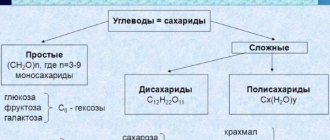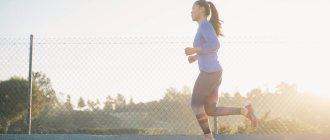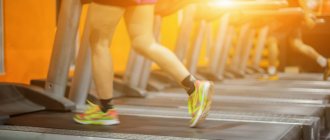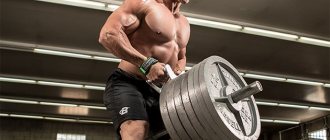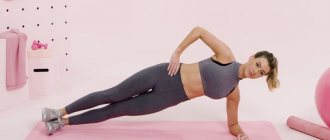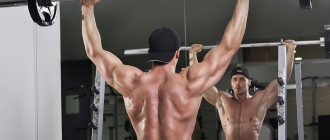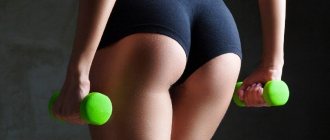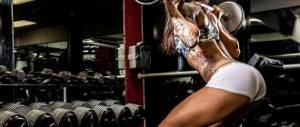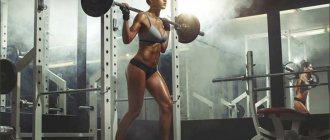Scientific Research Regarding Physical Fitness
Epidemiologists who study the impact of disease on large populations have spent several years researching the relationship between physical fitness and cardiovascular health. They concluded that people who lead an active lifestyle are less likely to have heart attacks compared to those who do not exercise enough. In addition, people who move a lot and do not use elevators have a lower incidence of heart disease than those who sit in the office all day and watch television in the evening.
Recommendations for those who have never exercised
Once you decide to get in shape, you should not look for excuses for postponing your workouts. Regularity is the key, as it takes at least a few weeks to automate a complex habit like regular exercise. You need to be patient and be consistent in your training.
Another tip is to use any excuse to be more active, such as avoiding the elevator all the time.
How to improve your physical fitness
The ability of the heart and lungs to supply the tissues and organs of our body with oxygen is the key to selecting the necessary loads to maintain physical fitness. Scientists measure this by the amount of oxygen absorbed by the body in one minute during strenuous physical activity.
For a healthy twenty-year-old man, this figure is approximately 45 ml of oxygen per kilogram of weight; for a woman - 10 ml less. After 20 years, this figure drops. For athletes it can be 80 ml, while for those leading a sedentary lifestyle it can be 25 ml.
Exercises that require additional oxygen are called aerobic exercises. Running, swimming, brisk walking, and team sports are examples of aerobic exercise that train the heart and lungs, increasing the intensity of their work.
Running is rightfully considered the most effective and affordable way to maintain physical fitness. In addition, it is very useful and important to pay attention to increasing the strength and flexibility of the body. When choosing exercises and creating a training program, you should remember that playing sports should be enjoyable and appropriate to your age and health.
According to experts, swimming is extremely useful for maintaining good physical shape. For those who like to compete, tennis or badminton are ideal, while those who love to travel may prefer cycling or hiking.
The main thing to understand before starting training is that you should not expect significant results in a short time. Only with a certain amount of persistence can you achieve a visible improvement in your well-being after several weeks of exercise.
The strength of a muscle depends on its size. It is known that under the influence of physical exercise, especially strength training, muscle mass increases. At the same time, blood circulation in the muscles increases, metabolic processes improve, and energy reserves increase. In training a cyclist, exercises with various weights are widely used: dumbbells, sandbags, medicine balls, weights.
When performing an exercise with significant weight, pay attention not to overload the cardiovascular and respiratory systems. To do this, alternate effort with rest. Lift a small load 2-3 times in a row, then rest for 2-4 minutes and do the same exercise again. The lighter the weight, the more times you can perform the exercise without interruption.
Exercises to overcome your own weight are close to exercises with weights. The most typical are squats (mainly on one leg) and pull-ups. Strength exercises with a partner, such as running, squats, and bending, are made more difficult by the fact that their weight is added to your own weight. So, first, develop the muscles of the whole body with a variety of physical exercises, mainly of a strength nature. This will be an integral part of comprehensive physical training. Then set another goal - to develop those muscles on which success in cycling depends, primarily the leg muscles.
During training, the body gets used to the increased load. After exercise, fatigue should pass quickly. If recuperation continues for a long time and you feel worse than usual (sleep, appetite, performance are disturbed, temperature rises), then you are overtired. If this happens, immediately change your workout routine or stop it temporarily. This requires constant self-control. Be able to count the number of pulse beats in 1 minute. Its frequency characterizes the work of the heart. Your doctor will tell you what a normal heart rate should be for your age. Keep a self-monitoring diary and write down the following data there: heart rate and breathing per minute (before and after training). Once a month, determine your weight, arm strength (using a dynamometer), and vital capacity (spirometry). This can be done in any medical office. In the diary, write down your observations of sleep, appetite, sports performance and, of course, data on the content of training, results in assessments, competitions and your well-being at the same time.
Doctors believe that if a person is well trained, then his pulse returns to normal by the end of the 3rd minute after finishing the exercises. By the end of the 5th minute, the pulse is restored in those who are satisfactorily trained. If after 6-7 minutes the number of heart contractions still exceeds the original level, then this means that you have not acquired sufficient athletic shape. Show the records to your doctor, and he will assess your health, and a physical education teacher or coach will help you determine your further training load.
Endurance
Endurance, an important physical quality that results in long-term performance, is essential for a cyclist. General endurance is an integral part of the all-round physical development of an athlete. The best way to acquire general endurance is long-term, relatively low-intensity training in cyclic sports - running, skiing, rowing, swimming, etc. At first, perform exercises without much strain. As your fitness increases, gradually increase the training load and duration of each exercise. General endurance allows you to achieve high performance and at the same time serves as the basis for the development of special endurance in cycling. The higher your general endurance, the better you will develop your special endurance.
Rapidity
The speed of movement required by a cyclist largely depends on the level of development of sports technique, muscle strength and elasticity, mobility in joints, and in long-term work, on the endurance of the athlete. The speed of movement can be increased by developing muscle strength and elasticity, since the fibers of a trained muscle contract faster. Speed develops better if the athlete has a specific goal when performing exercises: to cover a set distance as quickly as possible, to do more exercises per unit of time. Fast movements always require significant effort. Joint short-distance starts in track and field running, ice skating, and training competitions in performing exercises “who is faster” create good conditions for the manifestation of the fastest possible movements. When training to develop speed, pay great attention to relaxation, i.e. the ability to perform movements without excessive tension. The number of exercises repeated in one lesson to develop speed should not be too large. After just a few exercises performed at a fast pace, a feeling of some fatigue arises and movements become slower. And since the speed of movements has decreased, this means that the effectiveness of training, mainly aimed at developing speed, is also reduced. During exercise, constantly monitor your heart rate. Start new exercises only after the pulse calms down to 120-130 beats/min.
Dexterity
Agility is the ability to quickly and clearly solve unexpected problems that require immediate execution, when there is practically no time for reflection. Dexterity is developed through a wide variety of physical exercises. But sports games are especially effective: basketball, volleyball, hockey, football. Various ball games on the water or on an ice rink are useful for this purpose. To develop agility, acrobatic exercises are successfully used, mainly jumps, flips, and somersaults. In all cases, when developing dexterity, remember that exercises require not only physical effort, but also significant nervous tension. So don't overuse them.
So, mastering the technique of cycling, constantly increasing the fitness of the body, and achieving high sports results successfully occur only through the use of a variety of physical exercises. General physical fitness is a solid foundation that is laid in the first years of cycling, and further athletic performance depends on it.
This note is a training process plan for increasing the level of general physical fitness (GPP) of a man or woman; all exercises are performed with your own weight and do not require virtually any additional equipment. As an example, I will give the simplest set of exercises for a physically weak man or woman. It’s not difficult to “adjust” the complex to your needs; just replace simple exercises with more complex ones, according to the load rating at the end of the note (all exercises go from simpler to more complex). And let me remind you that any physical activity must be approached completely healthy and with the permission of a doctor.
Strength exercises.
- 1. Knee push-ups. (1-15 reps, in 4 sets)
- 2. Pull-ups on a low bar, feet on the floor, narrow, reverse grip (1-15)
- 3. Standing press with shock absorbers (1-15)
- 4. Pull-downs with a shock absorber while sitting on the floor (1-15)
- 5. Double leg squats (1-30)
- 6. Glute bridge with two legs (1-30)
- 7.
L - wiring with shock absorber lying down (1-15) - 8. Plank on the floor at an angle of 45 degrees (from 60 to 90 seconds, 2 sets)
- 9. Side plank from the knees (from 30 to 45 seconds, 2 approaches on each side)
Cardio exercises
- 1. Jump rope
Warm-up:
- Mobilization of joints (joint warm-up)
- Increase heart rate (jump rope 1 minute) (optional)
- 2-3 warm-up exercises with a shock absorber emitting the first two exercises of the complex
- Light stretching (optional)
Hitch:
- Joint hitch
Training schedule
On Monday, Wednesday and Friday - strength exercises with your own weight.
On Tuesday, Thursday and Saturday - cardio exercises of your choice, intensity below average, for example 30 minutes of jogging at a heart rate of 120-140.
Sunday is a day off.
The schedule is not rigid, if you feel accumulated fatigue, take an additional day or two of rest, shifting the training schedule.
Set specific goals
Before you start training, think about what you are trying to achieve. If this is a global goal, for example, to lose weight by summer, make it more specific: indicate specific desired parameters and time period.
Photo: istockphoto.com
Better yet, divide the global goal into several smaller goals: lose some weight in the first month, another part in the second, etc. This way you can track your progress and see the real result.
Ruffier-Dixon test (preferred)
Ruffier's test
— Dixon is a load complex designed to assess the performance of the heart during physical activity.
There are direct and indirect, simple and complex methods for determining PWC. Simple and indirect methods for determining PWC include the functional Ruffier test and its modification - the Ruffier-Dixon test, which use heart rate values during different periods of recovery after relatively light loads.
Ruffier's test. With the subject lying on his back, the number of pulsations in 15 s (P1) is determined over 5 minutes; then, within 45 seconds, the subject performs 30 squats. After the end of the load, the subject lies down, and the number of pulsations is again counted for the first 15 s (P2), and then for the last 15 s of the first minute of the recovery period (P3). Heart performance is assessed using the formula:
Ruffier index = (4 x (P1 + P2 + P3) - 200)/10
The results are assessed by the index value from 0 to 15. Less than 3 - good performance; 3-6 - average; 7-9 - satisfactory; 10-14 - poor (moderate heart failure); 15 and above (severe heart failure)
This test must be taken every 8 weeks, starting the first week before starting the program. The test result will indicate either an improvement or a deterioration (overtraining) in the athlete’s physical fitness.
Overtraining and colds can be tracked by your morning resting heart rate, immediately after waking up. If your resting pulse begins to rise, this is a sure sign of under-recovery of the body or an approaching cold.
Once a week, it is advisable to step on the scale and measure your weight. Use this procedure in the morning at the same time after bowel and bladder emptying.
Contents of general physical training tools
The term “physical training” is widely used in pedagogical processes when there is a need for education in relation to both labor and military and sports activities.
In the process of forming this quality, a person develops so-called physical fitness. It is a certain indicator characterizing the degree of formation of physical abilities, abilities and skills in a particular person.
In turn, in physical education there are two types of this parameter. Thus, physical fitness can be presented as:
- general physical training (GPP);
- special physical training (SPT).
As sports performance improves, during training sessions there is a gradual preponderance towards SPT, that is, the ratio between these two types is unequal and constantly changing.
General physical training is intended to improve and support a person’s performance, as well as his functional abilities and capabilities. It is this variety that is the base (foundation) intended for the formation of more highly specialized physical fitness in athletes in certain sports in order to achieve the best results.
The concept of general physical training includes a wide range of applied methods and means of general physical training. Their diversity is due to the fact that wide sections of the population are involved in the process, from young children to the elderly.
Thus, the current question is what the process of teaching general physical fitness includes. First of all, its integral attribute is the means and methods of general physical training. They include the following types:
- a set of physical activities. They include such varieties as swimming, running, sports and active games, as well as skiing and cycling, which perform the functions of developing general physical fitness. The set of exercises refers mainly to aerobic physical activity aimed at increasing endurance;
- healing powers of nature;
- factors of a hygienic nature.
With the help of these means, trainers implement the basic target task in educational institutions, which is to form physical education among students. The program of classes in groups should provide for the formation of general physical fitness, allowing young people to maintain performance and increase labor efficiency in the educational process.
However, it is necessary to note the fact that even a high level of this indicator is not a guarantee of success in various sports due to the lack of special preparedness. In them it should be of a specialized nature, and in professional activities it should be applied.
The main role of the funds is also to maintain the functioning of recovery processes in the body after physical activity. It can be both voluminous and quite intense. Loading allows a person to switch from one physical activity to another.
How to build exercise sets
It is recommended to start training with the simplest exercises and move to more complex ones, thereby changing the vector of load on the body and introducing variety, preventing the body from completely adapting to any one exercise.
Take one of the simplest exercises from each category. Make a program of these exercises; this program should be performed on Monday, Wednesday and Friday. The goal of this program is to increase the number of repetitions of each exercise. To make progress in your training, you first need to find out your current maximum for these exercises.
Test for determining the maximum in selected exercises
Before starting training on the set of exercises you have chosen, we will find out your maximum repetitions in these exercises. The maximum should also be calculated after changing a set of exercises to a more complex set.
- 1. Warm up
- 2. Perform the entire set of exercises (one after another) with a two-minute rest between exercises.
In each exercise you should give 100%, doing the maximum number of repetitions. Record your best scores in each exercise.
